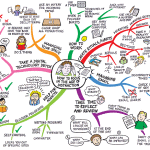Best illusion of the year 2016



Do you know that you use databases everyday? Actually databases are everywhere. When you log in, your credentials are validated against a database. When you are querying google or bing, a large amount of data get filtered to provide you adequate results. Even your phone contact list is a database too. Etc.
More interestingly, we have entered in the era of data. For example, “Wal-Mart, a retail giant, handles more than 1m customer transactions every hour, feeding databases estimated at more than 2.5 petabytes—the equivalent of 167 times the books in America’s Library of Congress”.
big-data_conew1 by luckey_sun (some rights reserved)
This accumulation of diverse data makes it possible to do many interesting things: spot behavioral or business trends, prevent diseases, extract unknown knowledge, detect fraud and prevent crime and so on.
Such advanced data analytics and data science is out of the scope of this article. First, I will present you what is SQL and what it looks like. Secondly, I will assess the advantages of learning SQL and tell you what is the expected level you should reach.
SQL (pronounce it “sequel”) stands for Structured Query Language and it is the primary language to interact with Relational Database Management Systems (RDBMS) which are based on the relational model as invented by E. F. Codd.
RDBMS are widely used in the world of databases management systems. There are several alternatives like hierarchical model, object-oriented databases or graph databases. So there are several query languages like SPARQL for RDF graphs or MDX for multi-dimensional analytical databases. Each fits for a specific purpose.
In a relational model, all data are represented in terms of tuples, grouped into relations. More explicitly, data are stored in tables with related tables.
Let’s talk of SQL. SQL is a language with a high level of abstraction, similar to natural language, then accessible to everyone.
SQL is divided in several sub-languages:
Not all are necessary for everyone. While some are mainly used by well-defined professional (DDL by database architects, DCL by database administrators and TCL by programmers), DML should be known by everyone who uses databases.
The most known DML statements are the SELECT, INSERT, UPDATE and DELETE (a few people know the other useful statements like the MERGE which is an upsert operation, e.g. INSERT or UPDATE).
As you may see the commands are quite intuitive (SELECT for section for example).
SQL queries are quite intuitives. Here is an example:
Sql statement anatomy by SqlPac. CC-BY-SA-3.0-MIGRATED
As you can imagine, the language allows complex queries with aggregate and analytic functions, recursion, even pattern matching in the Oracle dialect. Since it is a high level language, you have to be very careful with such advanced functionalities to get reliable results.
To understand the power of this language, take a look at the following image. It is the standard way to join data from several table into adequate sets.
The different types of SQL join and their outputs as determined by sets, by arbek
For basics purpose, you have to know the basics of a relational databases, being able to perform simple SELECT, INSERT and DELETE statements with the restricting WHERE clause and the ordering ORDER BY clause. You should also learn how to deal with dates and nulls, how to use the GROUP BY statement and built-in single row functions.
For intermediate level, you should know every concepts which are taught in the Querying Microsoft SQL Server 2012 Databases Jump Start (and how to implement it the dialect of the RDMBS you use).
At an advanced level, you should be able to became Oracle certified expert and pass the Oracle Database SQL Expert 1Z0-047 exam.
The RDBMS are designed to be extensively used and do not crash so easily.
Once the DBAs allowed you to connect to the appropriate databases, you can answer business questions in an advanced manner (far more powerful than Excel spreadsheets). No more need to rely on pre-built reports!
SQL queries can be saved and then be checked and re-used.
And last, but not least:
Since employers seek for this skill, you may earn more money. Actually most of people use SQL in a bad way and being certified is a great advantage.

Today, I’m back with a new post. I will present the advantages of using mind maps over concept maps.
A mind map example: guidelines
There are plenty of information mapping techniques. However, I chose to consider only 2 sort of them which are often seen as rivals : concept maps and mind maps.
Both techniques can be used by engineers, educators, technical writers, psychologist to organize knowledge.
More precisely, the former are used to structure knowledge by using link between words or phrases (mainly by engineers). They exhibit a hierarchical structure.
A concept map
… where the latter can be considered as spider diagrams (such diagrams are an extension to Vienn-Peirce diagrams and Euler circles which “express constraints on sets and their relationships with other sets”) and are used mainly for brainstorming and visual thinking.
An handmade mind map
So what is exactly the difference? Actually both techniques are similar in radial structure but differ in that the latter are simplified by focusing around a single central key concept. That’s the point.
In one hand, concept mapping is rather advantaging logical thinking and tend to be precise and verifiable. In the other hand, mind mapping equally combine logical thinking with creativity in that they are more personal and stimulating.
I found a picture of Philippe Boukobza that summarize the differences and similarities of both approaches but I would like to present you the true benefits of mind mapping.
Both techniques improves comprehension and memorization.
Mind mapping exhibits specific benefits which don’t always exist in concept mapping:
As you may conclude, such approach is useful for:
I hope you found this technique useful and will use it in a near future.
If so, there are several software which can help to to create such mind maps.